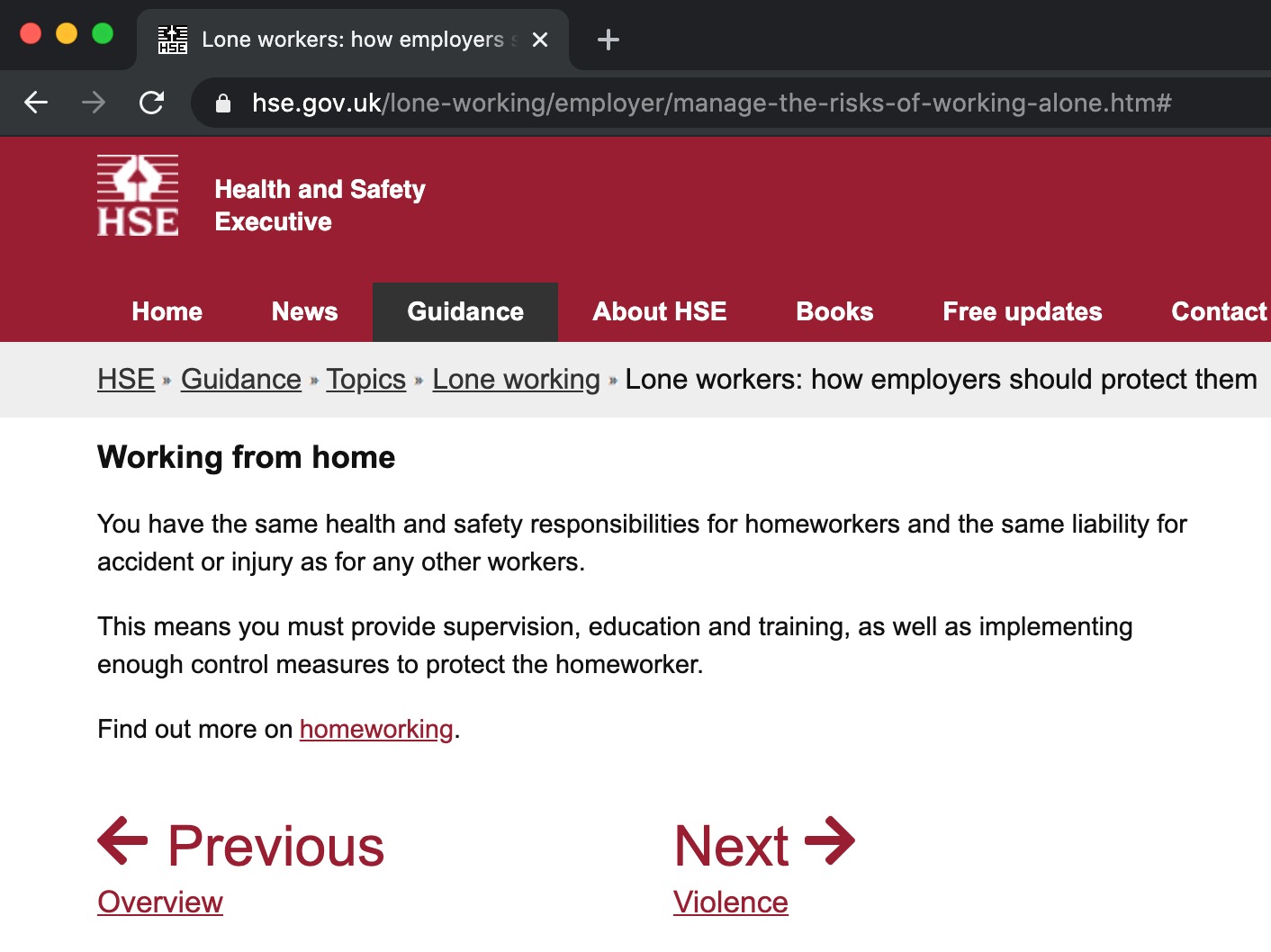Working from Home (WFH) is here to stay.

The world is different. Almost overnight, society and business changed forever. The problem with rapid change is where is the new point of reference. The first thing to remember is even if your business has changed, the law hasn’t.
As we move from "emergency" to the "new normal" effective Home Working is now part of a long-term successful future. Be it one day a week or full time, if managed properly, working from home can have significant benefits in terms of wellbeing, productivity and cost reductions for employer and employee.
The key word to focus on is “Working” from home. Too often the emphasis is on “home”, out of sight out of mind.
To ensure success you need to do things differently. Situations that used to be naturally resolved by “being there” now need to be coordinated.
It is simple but you need a structured approach, a policy, to ensure your business strengthens not dilutes with remote working.
Break it all down into sections; Legal, Wellbeing and Efficiency.
Combined they can create a new, highly productive, work-life-balance.
WHAT THE LAW SAYS
Before you do can things right, you need to know why.
The HSE states “You have the same health and safety responsibilities for homeworkers and the same liability for accident or injury as for any other workers.
This means you must provide supervision, education and training, as well as implementing enough control measures to protect the homeworker”.
"There will always be greater risks for lone workers with no direct supervision or anyone to help them if things go wrong."
https://www.hse.gov.uk/lone-working/employer/manage-the-risks-of-working-alone.htm
The problem is that there is no single definition on what you need to do to ensure you are meeting your legal duty of care obligations.
The bare minimum is to have a documented risk assessment and to have put in place suitable Lone Worker Policy with a robust safe system of work.
Put simply the Organisation can, whilst an employee is working, evidence that they are taking responsibility for health, safety (and wellbeing).
ACAS is also a good reference point https://www.acas.org.uk/working-from-home
LEGAL
Although the HSE has said, during this pandemic, temporary home workers do not need workstation assessments you do need to ensure you meet all ongoing legal obligations.
Assess risks, mitigating where possible and putting in place safe systems of working. This includes work area (workstation) , Display Screen Equipment (DSE) and Lone Working policies.
Ensure that a suitable work environment can be created not just the "workstation" and posture. Consider the whole environment, such as distractions, noise and trip hazards you are responsible to understand all these potential risks not just provide the correct equipment and technologies.
Don’t forget when someone is working, even when remotely, you have a legal duty of care to ensure they are safe.
You must have a lone working policy and a robust system in place, to ensure you know they are OK.


WELLBEING
Your approach to wellbeing needs to be different for remote workers. Develop a policy that is clear and simple, with buy-in from all, not just the remote worker. Think about what measurement or monitoring may be needed.
It's easy for resentment to slowly build for those that can and those that can't home work. Again, a clear documented company policy is transparent. We've all heard the "Oh, I was working from home yesterday!" and wondered what that actually meant.
Communication is key but it's also not about checking-up and cold Task reviews. It's about building trust and often about being more personal. You need to ensure those that do work from home don’t become isolated and those that can’t, don’t get resentful.
Encourage structure and routine; defined work hours, breaks, to-do lists, even suitable work attire. Promote a range of communication channels, between all team members, including that dreaded word, Video conference.
Video conferencing has been around for a long time but it has rapidly been embedded in the new normal. It may feel strange at the start but over time everyone becomes less self-conscious and becomes a natural form communication. It is not as personal as good old face-to-face contact but it is significantly better than phone calls and emails in understanding how all parties are feeling, both work and wellbeing. Don't underestimate the power of facial expression and body-language.
EFFICIENCY
How are you going to maintain productivity across the whole business, including remote workers? Often the simple things can have the biggest impact.
Video calls can be great keeping people engaged and seeing body signals. Humans are visual creatures. It's quicker and easier to ensure everyone understands what is going on when you see what is being talked about and you read facial expressions.
Make sure there is an agenda and clear outcomes, ensure that all attendees feel included and everyone knows what is required and the next steps. Subtle visual clues can be missed if you are not all in the same room. With a disparate team you can't just pop your head around the corner to check on something.
Ensure you make the most of screen sharing and collaboration tools. Everyone needs to be more structured, which is a good thing. People need to plan what they need to share and how it will be visualised on a small screen. Maybe printing out multiple copies of the same report and making everyone read through isn't the most efficient (or environmental) way of running your meetings or business and more?


If more than four people are on a call (video or telephone) insist that everyone puts their microphone on Mute, until they want to speak. We are able to cope with the background noise when we're all in the same place but not when it's multiplied across many locations. Microphones are not clever, unlike the human brain, and find it difficult to filter out what is important talking or just noise.
Also, think about email etiquette, when you have a remote workforce it is not always easy to pick up on the mood or levels of importance. Insist on clear Subject lines, correct use of To and CC, restrict the use of “Reply All” and flagging emails as Urgent! This is important for all businesses but becomes much more disruptive with remote teams. If something needs to be clarified jump on a quick call. Telephone is quick but video is often the most efficient. On a phone call what really is the true meaning of "Is that OK", "Yes, that's fine"?
These are just a few examples of how to successfully embed remote working into the culture of your business.
And don't forget the most significant benefit to your staff, your business and the environment - Everyone has more time "for" the business rather than wasted travelling or commuting ... the biggest waste of life there is. Just think how many more sales meetings or support calls you could achieve when "travel" was removed. Of course some things will always need to be carried out face-to-face / on-site but what would some client's prefer... three hours of your expert time or just one hour just so you can shake their hand (or bump elbows).

Rob Little, is the founder of MyTeamSafe® and was asked to write this original article for a business magazine.
MyTeamSafe is the leading automated system specifically designed to meet the needs of lower risk remote workers and home workers.
Simple, flexible and affordable. Quick to setup up, easy to manage. You remain in control not impersonal Call Centres (ARCs) that don’t know your staff or your business. From £2.50 per user/per month its the most cost effective way to protect your staff and your business. https://content.myteamsafe.com/
 MyTeamSafe
MyTeamSafe